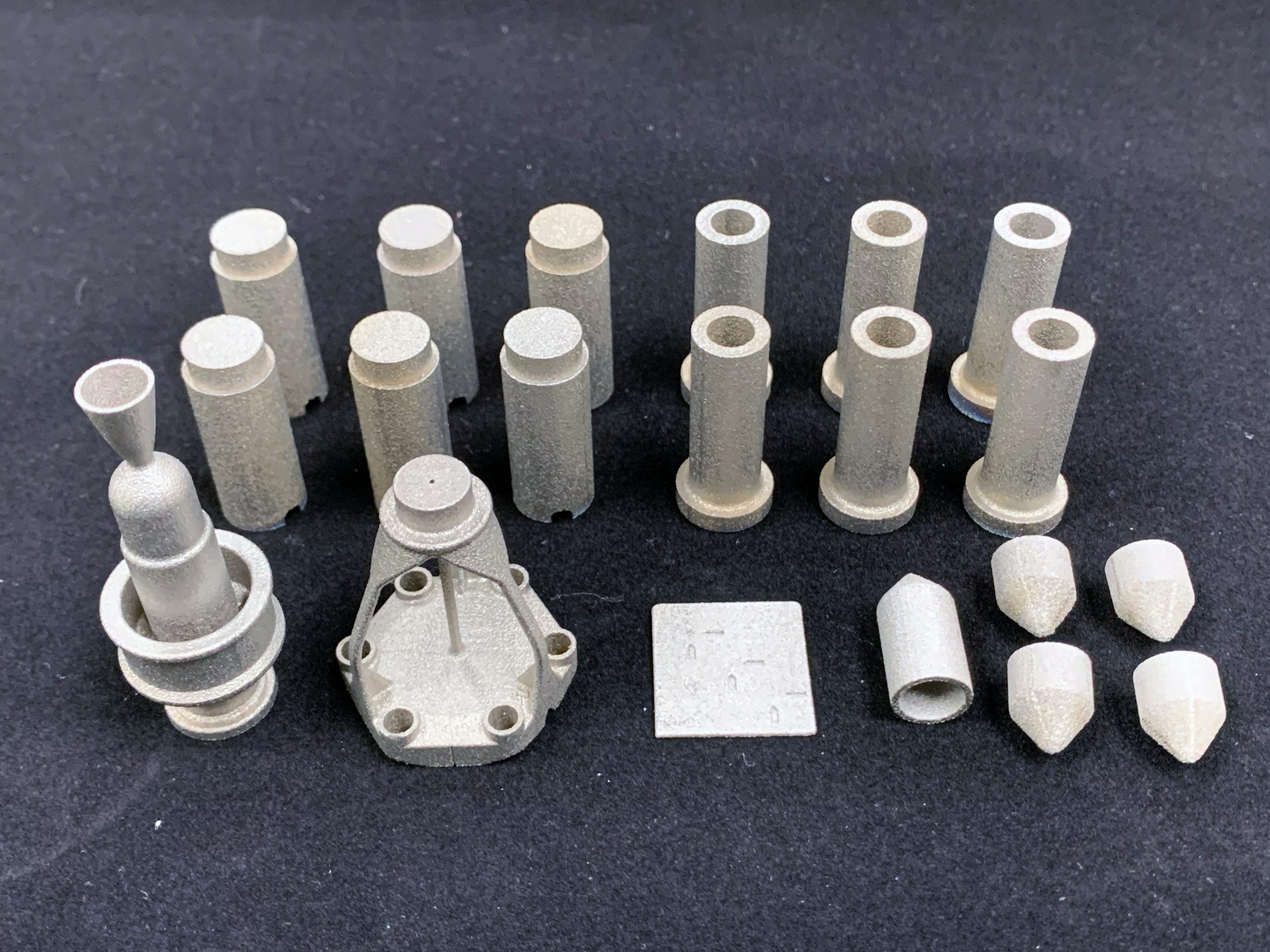Hypersonic technologies amplify many essential attributes of air power, such as flexibility, precision, speed and range. Refractory materials, and niobium in particular, are key components in this cutting-edge technology and necessary for advanced aircraft and missiles.
In this article, we discuss the unique properties of niobium and how it is used in hypersonic technology. We will also look at the material’s origins and how ADDMAN is helping propel the American hypersonic program forward with 3D printed C-103 alloys.
What are Hypersonic Technologies & Why are They Important?
Hypersonic technology has the potential to revolutionize transportation, allowing aircraft and missiles to travel at Mach Five (3,838 miles per hour) or higher speeds. Five times the speed of sound, these vehicles can soar one mile per second. Put in perspective, a commercial jetliner typically travels 460 – 575 miles per hour, which is about Mach 0.75 – 0.85.
With the advent of this new technology, new classes of flight vehicles have faster access to a military response, commercial air travel and space. In addition, hypersonic vehicles would be less reliant on traditional fuel sources, making them more environmentally friendly.
To achieve these high speeds, however, hypersonic vehicles must be incredibly strong and heat resistant. This is where niobium comes into the equation.
Niobium: The Metal of the Future
Niobium and columbium are interchangeable names for the element with the symbol Nb and atomic number 41. This rare element is primarily sourced from Brazil and is mined from tantalite and pyrochlore ores.
A transition metal that is soft and ductile, niobium forms a thin oxide film to protect from corrosion when exposed to oxygen. In its pure metal form, this element is incredibly versatile. In addition to its use in alloys, Niobium is leveraged in the construction of rocket subassemblies, jet engine components, and combustion equipment. The high melting point (2,469°C) and low density of niobium allow these types of parts to operate at extremely high temperatures with excellent corrosion resistance.
Outside the Aerospace and Defense sector, the material can be used in the production of superconducting magnets that power trains, MRI machines, and even the energy particle accelerator at CERN in Switzerland. It’s a truly diverse metal with a wide range of applications.
The C-103 Alloy & How It’s Used in Hypersonics
The most common niobium alloy is C-103, which is made by alloying Niobium, Titanium, Hafnium and Zirconium together. Developed in 1965, C-103 was initially used in the structure of the Apollo Lunar Command Module rocket nozzles. C-103 alloys commonly compose billets, plates, wire and machined parts.
C-103 is used in the construction of the hypersonic vehicle's structure, pipelines, and heat shields. The metal's high melting point ensures that the vehicle can withstand the extreme temperatures generated by friction as it speeds through the atmosphere, sometimes at Mach 18 and above speeds.
For instance, the United States is currently working on several hypersonic aircraft and missile projects. More importantly, we may have just taken the lead in hypersonic cruise missile tech with successful tests of our Hypersonic Air-breathing Weapon Concept (HAWC).
Furthermore, no country has hypersonic scramjet cruise missiles yet, but the U.S. is getting close to a breakthrough.
Castheon Hypersonics: Uniquely Positioned for Niobium Additive Manufacturing
Castheon, a business unit within ADDMAN, has been making huge strides in hypersonic manufacturing—developing a revolutionary new manufacturing process that allows niobium parts to be quickly and efficiently produced.
Castheon’s team of scientists and engineers is led by Dr. Youping Gao. Dr. Gao had the distinction of being one of the first people who was awarded a production certificate from NASA to create critical rocket components using Laser Powder Bed Fusion (LPBF). The laser additive process fuses atomized powder as a means of component fabrication, and when you marry this with the Castheon team's welding metallurgy approach to production, something unique happens.
The laser material interacts with our parameters to optimize our melt pool and material properties. This enables lighter design, crack resistance, and a final product that is magnitudes stronger than wrought niobium. All using 3D printing.
This advanced process control of refractory metal powders overcomes limitations that are inherent to niobium and its alloys.
ADDMAN’s Role in Hypersonic Technology
ADDMAN is at the forefront of hypersonic technology and is helping to propel the American hypersonic program forward. With the addition of Castheon to our portfolio, our experienced team has a deep understanding of the unique properties of niobium and how they can be used in hypersonic technology.
Additive-enabled manufacturing that solves complex problems from prototype through production is what ADDMAN is all about. We can print, design and ship Castheon hypersonic parts rapidly to satisfy accelerated testing needs.
We are committed to helping American scientists and engineers in the aerospace and defense industries bridge the hypersonic missile gap.
We are also committed to helping reshore and restore manufacturing in the USA. And as always, our capabilities and services are central to how we solve the problem.

